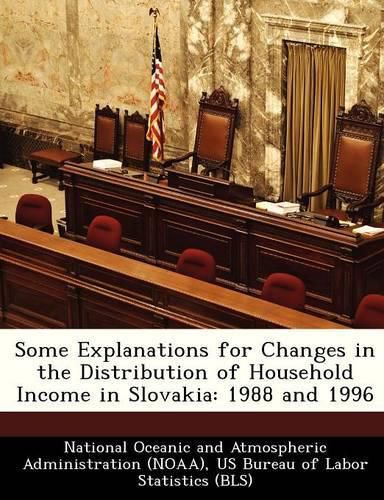Readings Newsletter
Become a Readings Member to make your shopping experience even easier.
Sign in or sign up for free!
You’re not far away from qualifying for FREE standard shipping within Australia
You’ve qualified for FREE standard shipping within Australia
The cart is loading…






This paper measures the change in overall net monetary income inequality during the first seven years of transition and considers the relative importance of two possible explanations for the increase in inequality: a) changes in the sources of household income, and b) changes in the household composition. Changes in the sources of household income reflect the role of the government and market during the transition period, while changes in household composition reflect social reactions to the changing economic environment. We find that the increase in inequality in labor income drove the large increase in inequality (i.e., the Gini index of household per capita income rose from 0.195 in 1988 to 0.263 in 1996). Changes in the distribution of pensions and other social payments mitigated the rise in earnings inequality, with the latter playing a more important role in reducing changes in overall income inequality over time. We show there are large shifts in the demographic composition of households over this period: far fewer households with children, far more households headed by pensioners, increases in the number of one-person households and decreases in large (five person) households. Although we find that these shifts in the demographic composition of households are increasing overall inequality, by increasing between group inequality, most of the change in inequality over time is accounted for by increase in within-group inequality. We conclude that over the first seven years of the transition labor market forces are driving changes in overall inequality in Slovakia to a much greater extent than changes in the government’s social safety net or in individual’s decisions about household formation.
$9.00 standard shipping within Australia
FREE standard shipping within Australia for orders over $100.00
Express & International shipping calculated at checkout
This paper measures the change in overall net monetary income inequality during the first seven years of transition and considers the relative importance of two possible explanations for the increase in inequality: a) changes in the sources of household income, and b) changes in the household composition. Changes in the sources of household income reflect the role of the government and market during the transition period, while changes in household composition reflect social reactions to the changing economic environment. We find that the increase in inequality in labor income drove the large increase in inequality (i.e., the Gini index of household per capita income rose from 0.195 in 1988 to 0.263 in 1996). Changes in the distribution of pensions and other social payments mitigated the rise in earnings inequality, with the latter playing a more important role in reducing changes in overall income inequality over time. We show there are large shifts in the demographic composition of households over this period: far fewer households with children, far more households headed by pensioners, increases in the number of one-person households and decreases in large (five person) households. Although we find that these shifts in the demographic composition of households are increasing overall inequality, by increasing between group inequality, most of the change in inequality over time is accounted for by increase in within-group inequality. We conclude that over the first seven years of the transition labor market forces are driving changes in overall inequality in Slovakia to a much greater extent than changes in the government’s social safety net or in individual’s decisions about household formation.